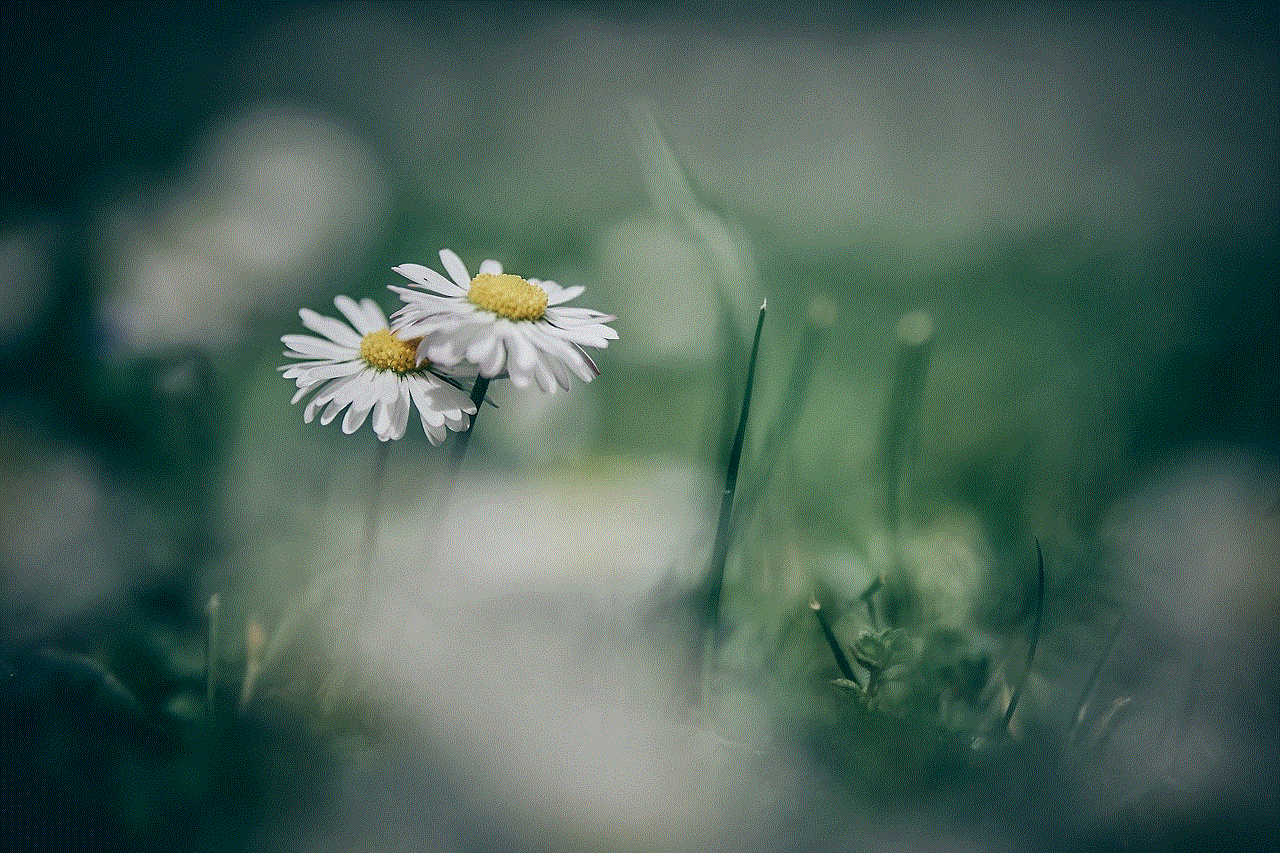what is oversharing on social media
In today’s digital age, social media has become an integral part of our daily lives. It has revolutionized the way we communicate, share information, and connect with others. With just a few clicks, we can share our thoughts, photos, and personal experiences with people all over the world. However, with the rise of social media, the concept of oversharing has also become increasingly prevalent. Oversharing refers to the act of sharing too much personal information on social media platforms, often without considering the potential consequences. In this article, we will explore the concept of oversharing on social media and its impact on our personal and professional lives.
The rise of social media has given us a platform to express ourselves freely and connect with others in ways that were not possible before. We can share our thoughts, opinions, and experiences with a larger audience, and this has created a sense of community and belonging. However, this freedom of expression has also led to people sharing more personal information than they should. From updates about their daily lives to intimate details about their relationships, social media has become a breeding ground for oversharing.
One of the main reasons for oversharing on social media is the desire for validation and attention. Many people use social media to seek validation from others, and they believe that sharing more personal information will make them more relatable and popular. However, this can often backfire, as oversharing can make others uncomfortable and even lead to negative reactions. It is essential to understand that validation and attention should not come at the cost of our privacy and well-being.
Moreover, oversharing on social media can also have significant consequences on our personal relationships. While we may feel the need to share every aspect of our lives with our online friends, it can lead to conflicts and misunderstandings with our loved ones. For instance, if we share intimate details about our relationships or personal issues online, it can cause trust issues and even jeopardize the relationship. It is crucial to maintain a balance and have open communication with our loved ones to avoid any misunderstandings caused by oversharing on social media.
Not only can oversharing impact our personal relationships, but it can also have severe consequences on our professional lives. With the rise of social media, employers and recruiters often check the online presence of potential candidates before hiring them. Therefore, oversharing can have a significant impact on our job prospects, as it can create an unprofessional image and raise red flags for employers. Sharing inappropriate content, such as party photos or controversial opinions, can harm our professional reputation and even lead to job loss.
Furthermore, oversharing on social media can also make us vulnerable to cyberbullying and online harassment. The more personal information we share online, the easier it is for others to target us. Cyberbullies and trolls often use personal information to harass and intimidate individuals, causing significant harm to their mental health. Moreover, oversharing can also make us vulnerable to identity theft and other forms of online fraud. Therefore, it is crucial to be mindful of the information we share online and take necessary precautions to protect our privacy and safety.
Another significant concern with oversharing on social media is the impact it can have on our mental health. Studies have shown that excessive use of social media and sharing personal information can lead to feelings of loneliness, anxiety, and depression. The constant need for validation and comparison with others’ seemingly perfect lives can lower our self-esteem and make us feel inadequate. Moreover, oversharing can also expose us to negative comments and criticism, which can take a toll on our mental well-being. It is essential to prioritize our mental health and be mindful of the content we consume and share on social media.
Furthermore, oversharing can also have legal implications. Many people are not aware that the information they share on social media is not always private and can be used against them in legal matters. For instance, posting about a vacation while on sick leave can be used as evidence of fraud by the employer. Similarly, sharing personal information about others without their consent can lead to legal action for invasion of privacy. Therefore, it is crucial to be cautious of the content we share on social media, as it can have long-term consequences.
In addition to the personal and professional impact, oversharing on social media can also have a broader societal impact. Social media platforms are often used to spread fake news and misinformation, which can have severe consequences. When people share information without fact-checking, it can lead to the spread of rumors and conspiracy theories, causing harm to individuals and society as a whole. Therefore, it is essential to be responsible and verify the information before sharing it on social media.
So, what can we do to avoid oversharing on social media? The first step is to be aware of the potential consequences of sharing too much personal information. We must understand that not everything needs to be shared online, and some aspects of our lives should be kept private. We should also be mindful of our online audience and consider how our posts may affect them. Moreover, it is essential to set boundaries and not feel pressured to share personal information to seek validation from others.
In conclusion, oversharing on social media is a growing concern that can have significant consequences on our personal and professional lives. While social media has given us a platform to express ourselves freely, it is essential to be mindful of what we share and the potential impact it may have. We should prioritize our privacy, mental health, and personal relationships over seeking validation and attention from others. It is crucial to strike a balance between sharing and oversharing on social media to maintain a healthy and positive online presence.
a spooky halloween night drawing game
Are you ready to get into the Halloween spirit? Get your pencils and paper ready because we are about to embark on a spooky Halloween night drawing game! This activity is perfect for both kids and adults who love to get creative and enjoy the thrill of the Halloween season. Grab your favorite Halloween-themed snacks and let’s dive into the world of eerie drawings that will send shivers down your spine.
First, let’s set the scene. Picture a moonlit night with a full moon shining brightly in the sky. The stars twinkle, casting an eerie glow over the landscape. The air is crisp and chilly, and there’s a light fog rolling in, adding an extra layer of mystery to the night. The setting is perfect for our spooky Halloween night drawing game.
Now, let’s start with the basics. Grab a pencil and a sheet of paper, and let your imagination run wild. The first drawing challenge is to create a haunted house. Think of all the spooky elements you’d find in a haunted house – cobwebs, bats, ghosts, and maybe even a few hidden surprises. Draw the house with its creaky doors and broken windows, and don’t forget to add some spooky details like a crooked chimney or a creepy tree looming in the background.
Next, let’s move on to the creatures of the night. Draw a group of bats flying across the moon, their wings spread wide as they soar through the night sky. Bats are often associated with Halloween and are a common symbol of the holiday. Use your imagination to create different bat poses – some hanging upside down, others in mid-flight. Add some details like their pointy ears and sharp teeth to make them extra spooky.
Now, let’s add some ghostly figures to our Halloween night scene. Draw a few ghosts floating through the air, their transparent bodies glowing with an otherworldly light. You can make them as friendly or as scary as you like – maybe one is smiling mischievously while another has a sinister grin. Don’t forget to draw their flowing robes and give them a sense of movement as they glide through the night.
To add an extra touch of eeriness to our drawing, let’s include a spooky tree. Draw a gnarled tree with twisted branches and a hollow trunk. You can make it as creepy as you like – perhaps it has glowing eyes peering out from its hollow or a face carved into its bark. The tree can be a gathering place for all the spooky creatures we’ve drawn so far, like bats hanging from its branches or ghosts floating around it.
Now, let’s turn our attention to the Halloween moon. Draw a large, round moon in the sky, casting an ominous glow on the night. You can make it as detailed as you like – add craters and shadows to give it a realistic look. You can even draw a face on the moon, like the iconic “moon with a witch” image often associated with Halloween. Let your creativity shine as you bring the moon to life on your paper.
To complete our Halloween night drawing, let’s add some final touches. Draw a spooky graveyard with tombstones and crosses scattered around. You can even add a few skeletons rising from the ground, reaching out with bony fingers. The graveyard can be the resting place for all the Halloween creatures we’ve drawn, adding to the overall spooky atmosphere.
Congratulations! You’ve completed our spooky Halloween night drawing game. Take a step back and admire your creation – a chilling scene filled with haunted houses, bats, ghosts, spooky trees, and a mysterious moon. This drawing is the perfect way to get into the Halloween spirit and set the mood for the holiday.
Remember, the beauty of drawing is that it allows you to bring your imagination to life. Feel free to add your own unique elements and make the drawing truly your own. If you’re feeling extra adventurous, you can even add some color to your drawing using colored pencils, markers, or paints. Let your creativity run wild and have fun with this spooky Halloween night drawing game!



Whether you’re drawing alone or with friends and family, this activity is a great way to bond over the Halloween season and get into the spirit of the holiday. So grab your art supplies and let your imagination soar as you create a spooky masterpiece that will send chills down your spine. Happy Halloween!
how to see who blocked me on twitter
Twitter is a popular social media platform that allows users to connect and interact with others through tweets, retweets, likes, and mentions. While it is designed to foster communication and networking, there may be instances where someone decides to block you on Twitter. Being blocked means that the user has restricted your access to their account, preventing you from seeing their tweets, engaging with their content, or even following them. If you are curious about who has blocked you on Twitter, this article will guide you through the process of finding out.
Before we delve into the methods of determining who has blocked you on Twitter, it is important to understand why someone might choose to block another user. People may decide to block others on Twitter for various reasons, including:
1. Offensive or abusive behavior: If a user finds your tweets or interactions offensive, they may choose to block you as a means of self-protection.
2. Harassment or stalking: If someone feels harassed or stalked by another user, they may resort to blocking them to prevent further unwanted interactions.
3. Privacy concerns: Some users may prefer to keep their Twitter account private and only allow access to a select group of individuals. If you are not part of this group, they may block you to maintain their privacy.
4. Disagreements or conflicts: Twitter is known for its diverse user base, and disagreements are bound to happen. If a user finds themselves in a prolonged conflict with another individual, they may choose to block them to avoid further confrontation.
Now that we understand the reasons behind blocking on Twitter, let’s explore some methods you can use to determine if someone has blocked you:
Method 1: Search for the user’s account
The first step in finding out if someone has blocked you on Twitter is to search for their account using the search bar at the top of the Twitter homepage. Enter their username or display name and see if their profile appears in the search results. If you can view their profile and tweets, you have not been blocked. However, if their account does not show up in the search results, it is possible that they have blocked you.
Method 2: Use a third-party app or website
There are several third-party apps and websites available that claim to help you determine if someone has blocked you on Twitter. These tools analyze your Twitter account and provide you with a list of users who have blocked you. Keep in mind that using third-party apps or websites might require granting them access to your Twitter account, so be cautious when sharing your personal information.
Method 3: Check for direct messages



If you have been blocked by someone on Twitter, you will not be able to send them direct messages. To check if you have been blocked, try sending a direct message to the user in question. If the message fails to send or you receive an error notification, it could indicate that you have been blocked.
Method 4: Mutual friends’ lists
If you have mutual friends or followers with the user you suspect has blocked you, you can check their followers or friends list to see if the account is still visible. If you can find the user’s account through a mutual friend’s profile, it suggests that you have not been blocked.
Method 5: Search for mentions
If the user who you think may have blocked you has mentioned you in their tweets, you can search for those mentions. Use the Twitter search bar and enter your username or handle. If you can find the tweets where you were mentioned, it indicates that you have not been blocked. However, if you are unable to locate any mentions, it is possible that you have been blocked.
Method 6: Observe public conversations
If the user you suspect has blocked you engages in public conversations with others on Twitter, you can observe those conversations to determine if you have been blocked. If you notice that all their conversations exclude you or you are unable to see their replies to others, it may indicate that you have been blocked.
Method 7: Create a new Twitter account
If you suspect that you have been blocked by someone, you can create a new Twitter account and search for their profile using the methods mentioned earlier. If you can find their account and view their tweets from the new account, it suggests that you have been blocked on your original account.
Method 8: Use Twitter analytics tools
If you are a business or have a Twitter account with a substantial number of followers, you can utilize Twitter analytics tools to gain insights into your followers’ activities. Some of these tools can provide information on users who have unfollowed or blocked you.
Method 9: Ask a mutual friend
If you have a mutual friend or follower who is still able to see the user’s tweets, you can ask them to confirm if you have been blocked. However, keep in mind that the mutual friend may choose not to disclose this information, so approach the situation with sensitivity.
Method 10: Acceptance and moving on
Sometimes, it may not be possible to determine who has blocked you on Twitter. Accepting that someone has chosen to block you and moving on is an essential part of using social media platforms. Dwelling on being blocked can be counterproductive and may negatively impact your well-being. Instead, focus on engaging with the positive aspects of Twitter and building connections with users who appreciate your content.



In conclusion, being blocked on Twitter can be frustrating, but there are methods you can use to determine if someone has blocked you. Whether it’s through searching for the user’s account, utilizing third-party apps or websites, checking for direct messages, examining mutual friends’ lists, searching for mentions, observing public conversations, creating a new account, using Twitter analytics tools, or asking a mutual friend, you have options to explore. However, it’s important to remember that acceptance and moving on are crucial aspects of maintaining a healthy online presence.
